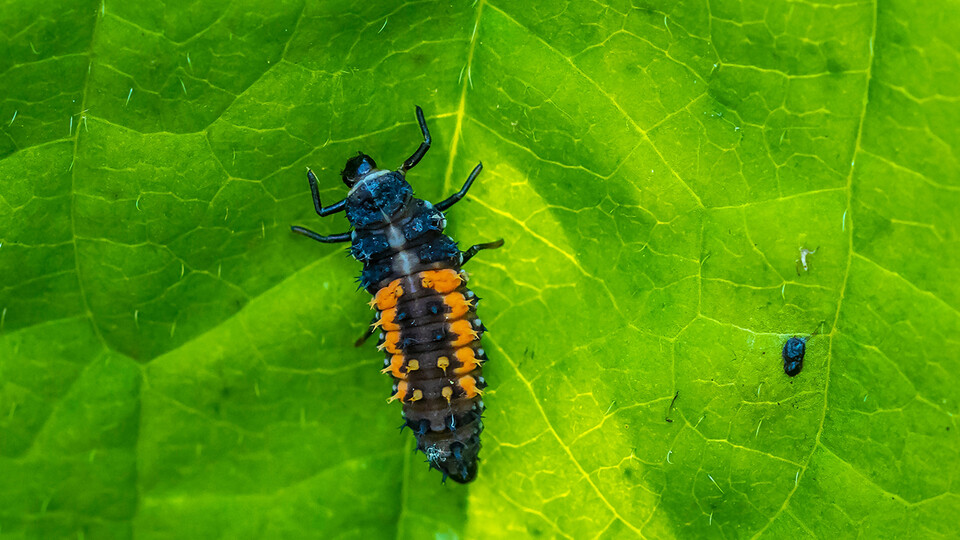· 2 min read
Husker entomologist featured in National Geographic

Julie Peterson, professor of entomology, was interviewed for a July 13 National Geographic article on why the world of insects has so many lookalike species.
“A lot of times these insects are trying to trick us and others around them on purpose. There’s all sorts of different types of mimicry” among Earth’s 900,000 known insect species, she said.
As well as mistaken identities, Peterson has encountered a recognition gap between ladybug, or ladybeetle, generations that leads to indiscriminate killing of the helpful insects. Most people know the adult ladybug, she said, but fewer recognize their eggs, larvae and pupae. Many gardeners destroy the young ladybugs, thinking something is wrong with their plant or mistaking them for a pest.
“The larvae of ladybeetles focus on eating aphids and other kinds of soft-bodied insects, whereas the adults can be a little bit more generalists,” Peterson said, including pollen and nectar in their diets.
Having more knowledge about insects makes it easier to coexist with them, she said.
For more information on Nebraska’s Department of Entomology, click here.
Nebraska Headliners highlights Husker faculty and staff featured in major news outlets. If you see a possible Nebraska Headliner, submit the story or URL via email to nebraskatoday@unl.edu.







